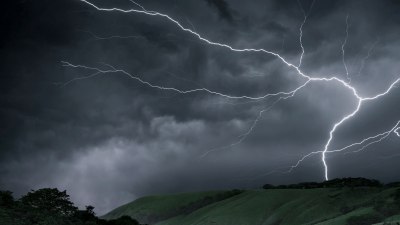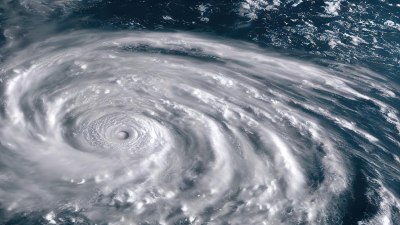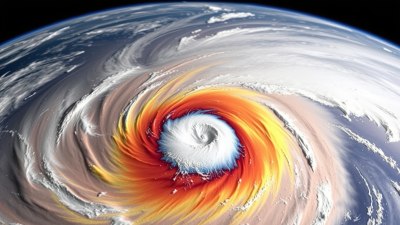Why Lightning Strikes Upwards Sometimes Not Down
Explore the fascinating phenomenon of upward lightning and discover why it occurs alongside traditional downward strikes.

Lightning is a mesmerizing natural phenomenon that captures our attention with its bright flashes and booming sounds. Most people are familiar with the traditional image of lightning striking downwards from storm clouds to the ground. However, there’s a lesser-known phenomenon known as upward lightning. This article aims to delve into the intriguing mechanics behind upward lightning, its occurrences, and its implications in the field of meteorology and safety.
Understanding Lightning
Before we delve into the specifics of upward lightning, it's essential to understand how lightning in general forms. Lightning is essentially a massive electrostatic discharge. When different areas within a storm cloud accumulate positive and negative charges, the resulting imbalance leads to the formation of lightning. In most cases, the discharge occurs from the cloud (typically negatively charged) to the ground (usually positively charged), resulting in the familiar downward lightning.
What Is Upward Lightning?
Upward lightning is the reverse of the usual lightning strike—wherein a discharge originates from structures on the ground and moves upwards to the cloud. This phenomenon typically occurs in specific conditions, particularly with tall structures like skyscrapers, towers, and antennas. Upward lightning is fascinating because it challenges the conventional understanding of how lightning interacts with the earth and the atmosphere.
How Does Upward Lightning Occur?
Upward lightning is often observed during thunderstorms when the electric field strength near the ground becomes sufficiently strong. This strength can initiate a process where a charge is artificially generated at a tall object. As the electric field builds, small conductive regions at the top of the structure begin to ionize, creating a path for the upward leader. This upward leader moves toward the negatively charged cloud base, completing the electrical circuit necessary for the discharge.
Conditions Favoring Upward Lightning
Upward lightning often occurs under specific conditions:
- Presence of Tall Structures: The most significant factor is the presence of tall conductive structures. These facilitate the upward discharge due to their height, which allows them to reach the positive charges in the cloud more easily.
- Strong Storms: Upward lightning is more common in severe thunderstorms where the electric field is exceptionally strong. The development of supercell thunderstorms can create the necessary conditions for this phenomenon.
- Atmospheric Conditions: Certain atmospheric conditions, such as humidity and temperature gradients, can affect the development and the intensity of lightning strikes, including upward lightning.
Types of Upward Lightning
There are primarily two types of upward lightning: initiation upward lightning and triggered upward lightning.
Initiation Upward Lightning: This occurs when the electric field strength at a tall structure exceeds the breakdown voltage of the surrounding air, initiating a discharge from the structure upwards toward the cloud. This type is typical of typical thunderstorm conditions.
Triggered Upward Lightning: This phenomenon occurs when an existing lightning leader is present nearby, and a tall object can 'sense' this and initiate its own discharge upwards, effectively bypassing the initial downward leader.
Real-World Examples of Upward Lightning
Several notable instances of upward lightning have been documented. One of the most studied examples occurred in the 21st-century storms over the Windy City—Chicago, where tall buildings regularly experience upward lightning strikes. These strikes can cause significant electromagnetic interference, leading to disruptions in electronic communications and other technology.
Another noteworthy instance was recorded at the CN Tower in Toronto, Canada. The tower, which stands at 553 meters, frequently attracts lightning strikes. In particular, studies have shown that upward lightning events can often exceed in intensity than their downward counterparts, leading to more significant energy discharges.
Implications of Upward Lightning
Understanding upward lightning has essential implications, especially for engineers and safety officials. The increased intensity of upward lightning requires buildings to have better lightning protection systems. Traditional grounding methods may need reevaluation to ensure they are effective against these powerful upward surges of electricity. Additionally, this knowledge can help in designing structures in storm-prone areas to minimize damage and ensure human safety.
In summary, while we often think of lightning as a downward phenomenon, upward lightning presents an equally interesting aspect worth understanding. By grasping the mechanics and conditions that lead to upward lightning strikes, we gain insight into lightning behavior during thunderstorms. This not only advances our knowledge of meteorological phenomena but also helps improve safety protocols and building designs in lightning-prone regions. As we continue to study storms and their various manifestations, understanding upward lightning will remain a critical area of research.











